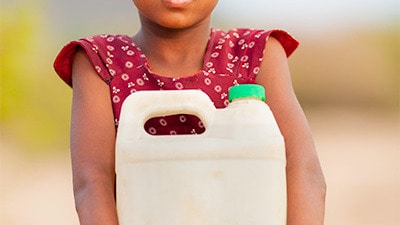Key points
- Global access to safe water, sanitation, and proper hygiene education can reduce illness and death from disease, improve health, reduce poverty, and help economic growth.
- Every year, diseases like diarrhea, cholera, and typhoid fever cause millions of illnesses and deaths, yet they can be prevented with better WASH practices.

Overview
Everyone needs clean water, safe toilets, and good hygiene habits to stay healthy, but not everyone has access to these essentials. Today, millions of people around the world do not have clean water to drink, and billions do not have a safe place to go to the bathroom. This can lead to serious illnesses like cholera, typhoid, and diarrhea, which are especially dangerous for infants and children.
Access to clean water, sanitation, and hygiene remains a significant global challenge, with over 2 billion people lacking clean drinking water at home, 1.5 billion lacking basic sanitation facilities, and 2 billion lacking basic hygiene services.
Universal access to safe drinking water, sanitation, and hygiene has the potential to greatly reduce global disease burden. Investing in water and sanitation interventions brings economic, environmental, quality of life, and health benefits. WASH also plays a key role in improving nutritional outcomes, particularly among children.
Global impact of waterborne infections
Unsafe water, inadequate sanitation, and poor hygiene play a major role in spreading diseases like cholera and typhoid fever. These conditions also contribute to the emergence of more dangerous forms of diseases, such as extensively drug-resistant typhoid fever. Addressing these challenges requires dedicated efforts to improve water, sanitation, and hygiene (WASH) practices. These improvements are necessary for preventing the spread of disease and dealing with emerging threats like antibiotic-resistant infections.
Harmful germs, parasites, or toxic chemicals can contaminate water. This contaminated water comes from human or animal waste, pesticides, and industrial waste. This can make people sick with diseases like cholera, typhoid, polio, and diarrhea. Diarrhea is one of the leading causes of death in children under five years old. The primary risk factors for diarrhea include unsafe water and sanitation, along with childhood malnutrition.
In addition, not having access to clean water, toilets, and good hygiene practices makes it harder to stop and manage neglected tropical diseases like schistosomiasis, trachoma, and Guinea worm disease. This keeps the cycle of poverty and sickness going. Having reliable access to safe water, proper sanitation, and good hygiene practices significantly reduces the burden of disease globally.
Key facts highlight the impact of these conditions:
- Diarrhea is a major cause of mortality among children under five, with about 88% of these deaths attributable to WASH issues.
- Cholera affects 47 countries, primarily impacting vulnerable populations, with efforts focusing on improving WASH and vaccination to prevent outbreaks.
- Typhoid fever, notably its drug-resistant strains, underscores the importance of enhanced sanitation, hygiene, and vaccination efforts for prevention.
Improving WASH infrastructure and practices is key to breaking the cycle of disease and poverty and highlights the need for global efforts to ensure everyone has access to safe water and sanitation.
